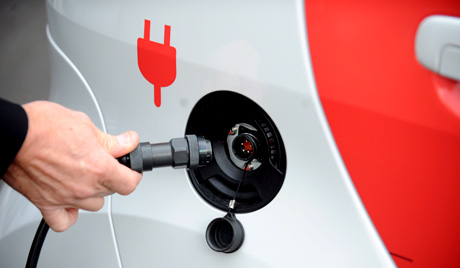The future of electromobility – an interview with Ulrich Wagner, DLR Executive Board Member for Energy and Transport.
How many electric cars will be using Germany’s roads in 2020?
None of us have a crystal ball and this will depend on a wide variety of factors.
In this interview Ulrich Wagner, German Aerospace Center (Deutsches Zentrum für Luft- und Raumfahrt; DLR) Executive Board Member for Energy and Transport, describes how many vehicles the transport researchers at DLR expect to see, which factors will be particularly influential and what areas would benefit from political intervention.
Increasing efficiency, designing hybrid vehicles and, above all, electromobility are the main topics at this year’s International Motor Show in Frankfurt (Internationale Automobil-Ausstellung; IAA). How has the research conducted at DLR contributed to the development of electromobility?
Ulrich Wagner: Firstly, I have to say I am very delighted that such a large number of electric vehicles were presented at the IAA. This is precisely what we need to ensure that the technology finally takes off. Our work here at DLR is geared towards the entire transport system. For quite some time now this has included drive technologies for electric cars and hybrid vehicles. We also develop alternative combustion engines that help extend the range, and hence act as a bridge to electromobility or vehicles powered exclusively by batteries. The traffic scenarios we develop stretch to 2050 and help predict how many electric vehicles will be on the road in future, as well as the measures that should be taken to ensure that electromobility proves successful.
Electromobility in Germany – what progress can we expect?
We currently have significantly fewer than 20,000 electric cars; like any new product at and around market launch, electric cars are confronted with a whole series of difficulties in competing with conventional vehicles powered by internal combustion engines. What we need is across the board investment to bring vehicles into the market and convince the public of the many benefits electromobility has to offer. A very broad range of factors will ultimately decide whether and how quickly we see large numbers of electric vehicles on our roads. The very different scenarios we have developed confirm this. Market penetration will take far longer if we assume that the conditions will change slowly. In this case, the number of vehicles on our roads in 2020 will be around 150,000, but the curve will rise steeply from then on. Other studies that DLR researchers have conducted using more optimistic conditions suggest that the number of electric vehicles in 2020 could be many times higher.
What do you consider to be ‘slow’ in this paradigm shift?
What we mean by ‘slow’ changes in this context includes no sharp rise in fuel prices, no sensational breakthroughs in battery technology and no profound changes in user attitudes. This scenario also presumes that vehicle manufacturers will remain cautious, averse to taking the risks associated with a special marketing strategy to boost the uptake of electric vehicles. In short, the electrification of personal vehicles will be a slow process unless there are substantial changes over the coming years. It will happen, but it will take time.
What aspects will be particularly influential for the number of electric cars in 2020?
Our simulations show that the parameters will include carbon dioxide limits and other cost trends. Consumers will turn to vehicles with alternative drive systems if the cost of fossil fuels rises faster than expected. Developments in the cost-effectiveness and performance of batteries will have a crucial role to play. An additional factor is the change in consumer behaviour due to demographic change.
In which areas can the political realm bring its influence to foster growth in electromobility?
Our scenarios are intended to analyse a broad spectrum of conceivable situations and to derive calls for action from the data we produce. On the one hand, politicians can create incentives by cutting the taxes on electric cars. For example, Norway has exempted electric cars from registration costs as well as import and customs duties. Local governments could allow them to use bus and taxi lanes. Naturally, though, publicly financed research on the drive systems and – most importantly – the batteries will be crucial to help extend the range. There are schemes in place within the support programme ‘Schaufenster Elektromobilität’ (Electromobility Showcase) to help promote large-scale, innovative demonstration and pilot projects. Despite all the challenges that policymakers, researchers and car manufacturers face, we must not overlook the opportunity presented here. Electric cars produce far less noise, for instance, so our future cities could be quieter and cleaner. DLR is conducting research on cars and transport systems for the future; electric vehicles and innovative, highly efficient internal combustion engine vehicles will both have a role to play.


